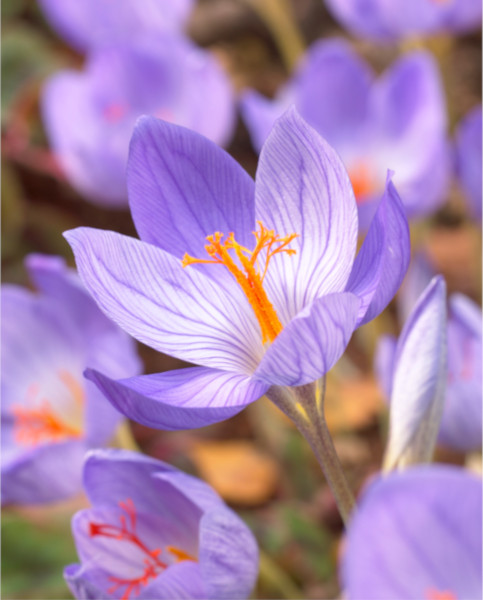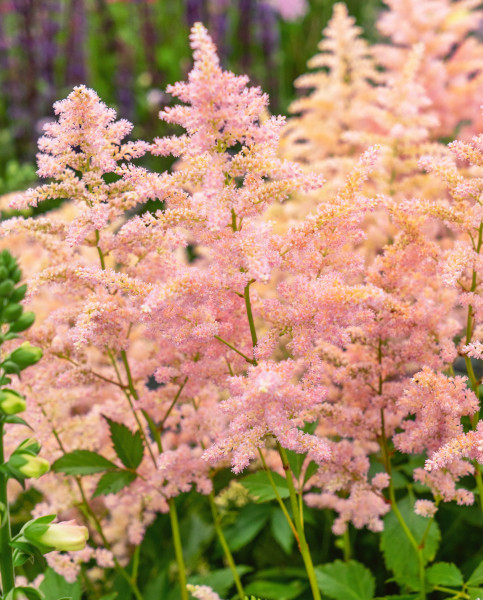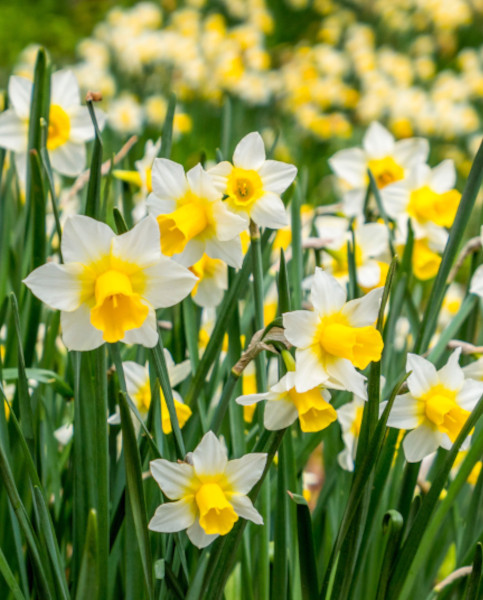How to grow Scilla
Dramatic buds that really make a statement as they open upwards to form dense cones of sparkling, star-shaped flowers over fleshy strap-shaped foliage.
Scilla is a large family of varying different flower shapes, that actually belong to the Asparagus family. Native to central and southern Europe and Turkey, they are found naturally growing in woodlands, on the seashore, and subalpine meadows. These beautiful and reliable plants will return year after year, providing carpets of fantastic colour soon after the snowdrops have faded.
Scilla are late spring bloomers that will quickly and pleasantly naturalise when planted beneath deciduous shrubs and trees that enable some light to get through, near streams and ponds or in a woodland setting. Scilla are perennial bulbs, that are untroubled by rodents and deer. The narrow strap-shaped leaves die back once flowered, to resprout again in the autumn.
Scilla are a variable family. Happy planted within formal, modern or cottage garden schemes, gravel or rock gardens, courtyard or wildflower meadows, whether in containers or at the front of borders.
Scilla bifolia have the common name, Alpine Squill, and is found growing in shade loving woodlands and within mountain grasslands. The flowers are upward-facing, unlike the nodding, almost Snowdrop-like flowers of the Northern Iranian Scilla siberica.
The Peruvian Scilla is a Mediterranean beauty that many believe first arrived in the UK on a ship named Peru, and the botanist Carolus Clusius mistakenly took the name of the ship as the country of origin, hence you find 'peruviana' as part of their name.

Key Information
Soil pH
Position
Hardiness


Where & when to plant Scilla
The best time for planting Scilla bulbs is in the autumn so they can put down roots before the worst of the winter. If you are not ready to plant your Scilla bulbs when you receive them, store in a cool, dry, well-ventilated place in temperatures between 4-20°C for a short while but be careful they do not dry out too much. Alternatively, you could plant them in moist compost in a seed tray until you are ready.
Scilla prefer to be grown in moist, well-drained soil that does not get waterlogged. If required, you may need to add horticultural grit to aid with drainage or organic matter to retain moisture.
How to plant Scilla
Choose your planting position in sun or partial shade and dig the holes at a depth of around 5-10cm dependant on the variety you have chosen. The general rule is that the hole should be 2-3 times as deep as your bulbs are tall. Place your bulb in the hole with the pointed end upwards, and back fill with soil. The tip of the bulb should sit just below the surface of the soil. For a natural look, plant in clusters of up to 12 with a spacing of 5cm between. If you gently toss a handful of bulbs onto your planting site, plant the bulbs where they land so long as they are not too close to each other.
If you are planting your Scilla in a container, use a good quality multi-purpose compost with crocks in the base to help with drainage. Plant your bulbs as above although they can be closer together, as long as they are not touching each other or the side of the pot.




How to care for Scilla
Water regularly during the growing period but be careful not to overwater as the bulbs may rot if waterlogged.
As with most bulbs, removed the faded flower heads but leave the foliage to continue to photosynthesise, producing nutrients and energy to store back in the bulb ready for an even better show the following year. Remove the foliage once it has yellowed and died back, which will usually take 2-3 weeks.
If growing naturalising in grass, remember not to mow until the leaves have fully faded. The bulbs will remain dormant until the spring.
Scilla tend to be hardy to around -10°C, so should be hardy within most of the UK. However, some frost protection would be advisable during the coldest winters in the most exposed areas.
Scilla will naturally spread by producing bulblets off the main bulbs below the ground. If the clumps get too large, you can lift them and split them into sections in early summer once they have died back. You can then replant the smaller clumps elsewhere or given them to friends or neighbours. Alternatively, propagate by seed sown in containers in a cold frame in autumn. These seed will need a cold period to germinate and can take up to 4-5 years to become mature enough to produce flowers.
How to propagate Scilla
Scilla will naturally spread by producing bulblets off the main bulbs below the ground. If the clumps get too large, you can lift them and split them into sections in early summer once they have died back. You can then replant the smaller clumps elsewhere or given them to friends or neighbours. Alternatively, propagate by seed sown in containers in a cold frame in autumn. These seed will need a cold period to germinate and can take up to 4-5 years to become mature enough to produce flowers.




